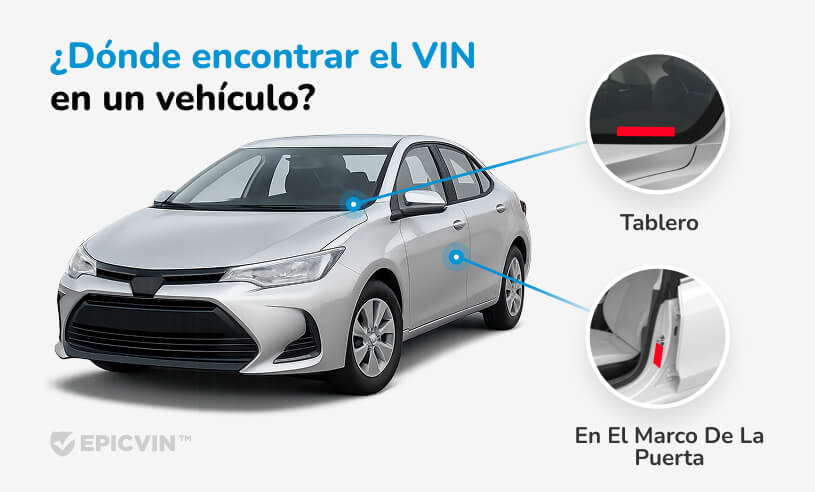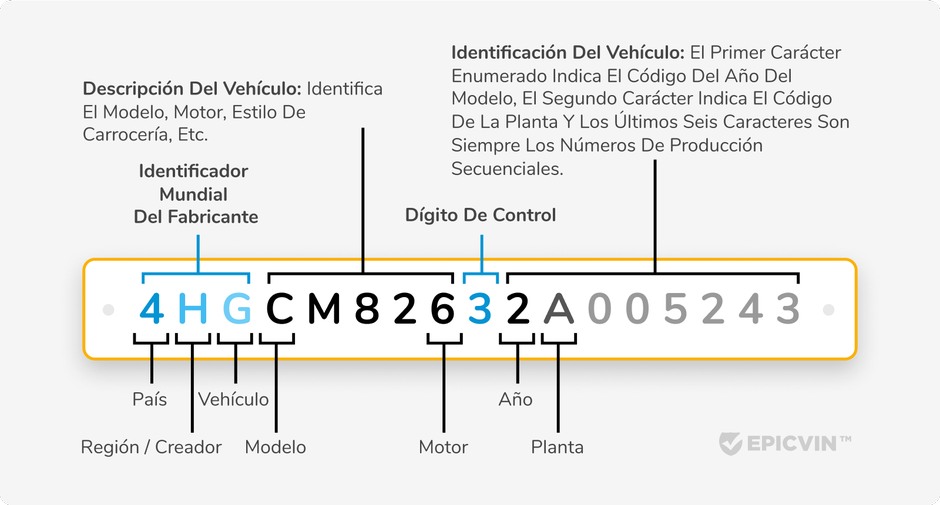
Decodificación del VIN
En este artículo, hemos descrito en detalle qué es el código VIN.

¡Decodificador de VIN Plymouth gratuito! 🚗 Consulta especificaciones, hoja de construcción, retiradas del mercado e historial básico - sin registro. 🛡️✅ ¿Necesitas accidentes, kilometraje, títulos? Actualízate con un clic.
Búsqueda del VIN
Aquí lo puedes encontrar:

El número vin Plymouth o número de identificación vehicular se volvió obligatorio en 1981 siguiendo estándares del Instituto ISO. Este VIN de 17 caracteres revela especificaciones cruciales, retiros del mercado y datos de historial. Nuestro decodificador de vin transforma estos dígitos del número de serie Plymouth en información útil al instante.
Decoding your Plymouth VIN number takes seconds with our specialized tool.

El numero de serie Plymouth de tu automóvil aparece en múltiples ubicaciones para propósitos de verificación vehicular.
| Riesgo Clave | Impacto en Compradores | Pasos de Mitigación |
|---|---|---|
| Riesgo de Robo | Los modelos Plymouth sedán y de 2 puertas más antiguos sin inmovilizadores de motor son robados un 11% más frecuentemente que Honda de la misma edad (NICB 2024). | Instala un interruptor oculto o inmovilizador de postventa. |
| Retiros de Seguridad No Reparados | El 14,6% de los números VIN activos tienen al menos un retiro abierto (NHTSA 2025). | Ejecuta una verificación VIN, agenda una visita al concesionario para la reparación gratuita. |
| Depreciación con el Tiempo | Los valores promedio de Plymouth cayeron 4,3% en 2024, mientras que los Prowler en perfecto estado ganaron 12% (Hagerty). | Elige acabados especiales, mantén piezas OEM y registros de mantenimiento. |
| Fraude de Reversión de Odómetro | Los automóviles Dodge y vehículos Plymouth >20 años muestran una tasa de reversión de 1 en 15 (Carfax 2024). | Verifica el kilometraje contra la cadena completa de etiquetas DMV vía EpicVIN. |
| Historial Oculto de Inundación o Salvamento | El 18% de automóviles en subasta en 2024 tenían títulos previos por agua o pérdida total (IAAI/Copart). | Examina minuciosamente el VIN por conversiones de marca y ordena una verificación de inundación EpicVIN. |
Cómo minimizar riesgos: Verifica el historial VIN a través de EpicVIN, confirma el kilometraje contra títulos, busca marcas de inundación y cierra prontamente las campañas de retiro abiertas.
| Problema | Modelos Afectados, Síntomas, Costo Promedio de Reparación |
|---|---|
| Modo Limitado de Transmisión | Voyager/Grand Voyager 1996-2000 (65k-120k mi); bloqueo súbito en segunda marcha, código de falla en tablero P0700; ≈ $1.800 motor reconstruido. |
| Fuga de Empaque de Culata | Neon y Breeze 1995-1999 2.0L SOHC (80k-150k mi); mezcla aceite/refrigerante, humo blanco del motor; ≈ $1.450 piezas y mano de obra. |
| Falla de Bomba de Combustible | Modelos basados en Plymouth Barracuda y Dodge Charger 1997-2001 (70k-110k mi); arranque difícil, pérdida de potencia; ≈ $720 reemplazo de módulo. |

Cada carácter en el número único de tu vehículo cuenta una historia específica. Aquí está el formato VIN estándar, revelando características de producción y especificaciones técnicas:
Hay algunos otros detalles que los propietarios y compradores de Plymouth Fury deben conocer:
Así es como nuestra herramienta interpreta un VIN de muestra (3P3AA46K9RT212493):
| Símbolos | Muestra | Lo Que Revela |
|---|---|---|
| 1 | 3 | Estados Unidos como país de origen |
| 2 | P | Plymouth como fabricante |
| 3 | 3 | Tipo de vehículo de pasajeros |
| 4-8 | AA46K | Carrocería hardtop de 2 puertas, motor, sistema de sujeción, línea del automóvil y código de clase de precio |
| 9 | 9 | Dígito de verificación para validación |
| 10 | R | Designación del año modelo |
| 11 | T | Ubicación de planta de ensamblaje |
| 12-17 | 212493 | Número de secuencia del vehículo individual |
Año 1993
Marca Plymouth
Modelo Sundance
Tipo de combustible
Motor 2.5L In-Line
Hecho en USA
El decodificador vin Plymouth revela datos completos más allá de especificaciones básicas.
Nuestro archivo contiene más de 4 millones de fotos de subastas Plymouth—un clic muestra una cronología completa de salvamento.Alex Black, CMO, EpicVIN
Verifica el tablero, marco de la puerta del conductor, motor o documentos oficiales.
Los modelos Valiant y Dart pre-1981 usaron secuencias más cortas antes de los requisitos de estandarización.
Sí, nuestra base de datos incluye más de 4 millones de imágenes de subastas y registros de pujas.
Los automóviles Dart de más de 20 años muestran tasas de reversión de 1 en 15 según datos de la industria
El cumplimiento de importación varía; verifica los estándares de emisiones del año específico para tu unidad en el sitio oficial
La marca se descontinuó en 2001, haciendo inexistente la producción 2002 en cualquier página.
Contacta las agencias municipales originales o usa registros de historial de flota EpicVIN para verificación. Por ejemplo, las variantes Dodge Polara usaron rangos VIN específicos para identificación de flota.
NHTSA mantiene bases de datos de retiros independientemente del estado de descontinuación de marca para todas las unidades.
Las posiciones del código del motor típicamente indican el tipo de transmisión en la sección VDS para análisis.
Las medidas antirrobo se implementan en ciertas configuraciones de alto rendimiento y premium encontradas en variantes selectas basadas en Chrysler Newport.
Los VIN estándar requieren exactamente 17 caracteres; las secuencias incompletas indican problemas potenciales con la verificación. La policía usó rangos VIN específicos para identificación de flota, mientras que las aplicaciones de taxi recibieron números designados para rastreo municipal.
Descubra consejos de expertos, sugerencias y noticias sobre la compra y el mantenimiento de vehículos usados.

En este artículo, hemos descrito en detalle qué es el código VIN.

Lea este artículo para descubrir mucha información útil sobre el VIN de su aut...

Lea este artículo para descubrir mucha información sobre las partes de un vehí...